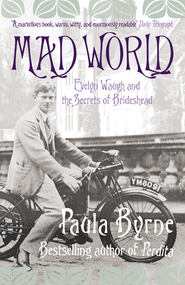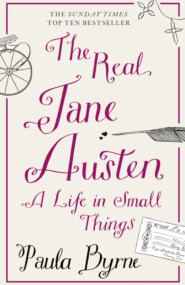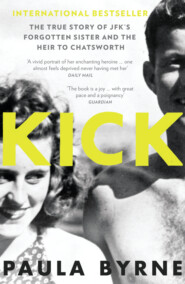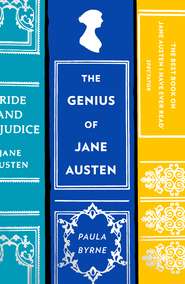По всем вопросам обращайтесь на: info@litportal.ru
(©) 2003-2024.
✖
Belle: The True Story of Dido Belle
Автор
Год написания книги
2019
Настройки чтения
Размер шрифта
Высота строк
Поля
Though Thistlewood lived with Phibbah as his favoured concubine, he was dismissive of other white men’s ‘infatuated attachments’ to black women. His friend William Crookshanks was besotted with his slave lover Myrtilla, and cried when she miscarried his child. They later had a ‘mulatto’ daughter. The other planters were dismayed by the hold Myrtilla had over him, and it ‘weakened his standing within white society’.28 (#litres_trial_promo)
Lady Maria Nugent, the wife of Jamaica’s Governor General Sir George Nugent, kept a journal during her stay on the island from 1801 to 1807. She noted that white men of all descriptions, married or single, lived in ‘a state of licentiousness’ with their female slaves.29 (#litres_trial_promo) Naturally, the white lady of the Great House resented her slave rival, particularly when children were born. Molly Cope was the very young wife of a sugar planter, John Cope. She knew that her husband kept a black mistress, Little Mimber, but was powerless to intervene, and so turned a blind eye. Other wives were less tolerant, and would punish their female slaves. Thistlewood recorded in his journal that Dr Allwood’s wife flogged to death a black slave, the third that she had killed in this way.
In the absence of documentary evidence about the relationship between Captain John Lindsay and Maria, what we can reconstruct of her life comes down to probability. She probably endured the full horrors of capture in Africa and a transatlantic voyage. She may well have been sexually assaulted – possibly more than once – before Lindsay took her from the Spanish. Their relationship, by contrast, was probably – though by no means certainly – loving and consensual. Lindsay would have been the victim of gossip and disapproval for taking a black ‘wife’, especially once she became pregnant. But the stories of figures as diverse as Thomas Thistlewood and Mary Prince show that the relationship that gave birth to Dido was by no means unique in the annals of the slave era.
4
4. (#ulink_220a1d04-ecf9-5eed-b97c-e748b8ef54ea) Still life with meat, kettle, cup, sugar loaf and sugar lumps
All slaves want to be free – to be free is very sweet
Mary Prince
It is pure, bright, dazzling white, a solid conical shape with a rounded top. It is wrapped in blue paper to emphasise its refined whiteness. Weighing anything from five to thirty-five pounds, this substance can be found in all but the very poorest kitchens in Georgian England, where it is locked away in a box by the lady of the house. Because sugar is expensive, and Georgian England has a very sweet tooth.
A sugarloaf. It is a shop-bought luxury item, purchased with other imported consumables such as tea, coffee and drinking chocolate. The semi-hard sugar cone requires its own hardware: a sugar axe or hammer to break it into chunks, and sugar nips – plier-like tools with sharp blades – to break off small pieces, which can be transferred into sugar boxes, and then used to sweeten those exotic hot drinks that Britain is consuming with such insatiable thirst.
Sugar had once been the luxury of nobles. Portraits of Tudor aristocrats show their subjects holding precious boxes of sugar as they would white gold. By the mid-eighteenth century, though, the substance was to be found in most middle-class, and many labouring-class, homes.1 (#litres_trial_promo) Coffee houses and tea gardens were all the rage, places where polite society gathered to sip hot drinks and gossip.
But sugared hot drinks were most often consumed in the comfort of the home. Tea, in particular, was the soft drug of the English, taken behind the closed doors of townhouses and country cottages. A commentator observed in 1744 that the opening of ‘trade with the East Indies brought the price of tea so low, that the meanest labouring man could compass the purchase of it, when sugar, the inseparable companion of tea, came to be in the Possession of the very poorest Housewife, where formerly it had been a great Rarity’.2 (#litres_trial_promo) White, refined sugar was seen as a status symbol, a way for the middling classes to be associated with the privileged upper classes. Dark-brown sugar was consumed by the lower classes. Breakfast china sets, teacups, saucers and sugar bowls were bought with matching trays. The famous workshop of Josiah Wedgwood supplied an ever-expanding market with pottery and porcelain as tea and coffee became affordable by a wider range of people. Wedgwood grew rich on sugar.
In one humble Hampshire cottage, an unmarried daughter was in charge of sugar and tea supplies (locked in a box, of course, to prevent pilfering). In 1808 her mother had purchased a ‘silver tea-ladle and six whole teaspoons which make our sideboard border on the Magnificent’, and she was given a Wedgwood breakfast set as a present in 1811 – we learn this from the tea-loving daughter, whose name was Miss Jane Austen.3 (#litres_trial_promo) It was Jane’s job to make breakfast, and every morning she could be found presiding with domestic pride over the large copper teakettle in the dining room. The taking of tea is frequently mentioned in her novels. Miss Bates, the gossip in Emma, is one of the female characters who loves her cup of tea: ‘No coffee, I thank you for me – never take coffee – a little tea if you please.’4 (#litres_trial_promo)
Sugar was also used in cakes, puddings and preserves. British people loved sugary desserts: trifles, fools, syllabubs, apple pies, milk puddings, ice cream. Thanks to drinks and puddings, Britain consumed four times as much sugar in 1770 as in 1710.5 (#litres_trial_promo)
Yet few people, sipping their hot, comforting cup of tea in the mid-eighteenth century, stopped to consider where the white stuff came from, or how it was produced. Nor would many of the sugar addicts have known of the personal cost to the people who produced it: the violence, the exploitation, the horror. Any qualms they might have had were well disguised under the veil of patriotism. Drinking sugared tea supported British colonies, and the moral efficacy of sugared drinks was celebrated: ‘the cup that cheers but does not inebriate’.6 (#litres_trial_promo) If one did pause to consider the cost, then how would Britain deal with its sugar addiction? Perhaps it was better not to think at all.
I pity them greatly, but I must be mum,
For how could we do without sugar and rum?
Especially sugar, so needful we see?
What? Give up our desserts, our coffee, and tea!
In this poem of 1788, entitled ‘Pity for Poor Africans’, William Cowper, the most popular and admired poet of the day, raises the uncomfortable truths behind the production of what was at the time the most powerful commodity on earth. The consumption of sugar was rendered possible through the exploitation of Africans captured and sold as slaves to work the plantations in the West Indies. Cowper begins with this stanza:
I own I am shock’d at the purchase of slaves,
And fear those who buy them and sell them are knaves;
What I hear of their hardships, their tortures, and groans
Is almost enough to draw pity from stones.
Cowper was writing at a time when the abolition movement was under way. Previously, few people stopped to consider that England’s addiction to sugar came at a terrible human cost. When the women of England purchased their hard white phallus of sweetness, they probably wouldn’t have known that it was once sticky, black, viscous molasses, refined to look and taste palatable, stripping it of its nutrients and vitamins.
Sugar growers had discovered that cane was best grown on relatively flat coastal land where the soil was naturally yellow and fertile, and the temperature mild and sunny. The Caribbean provided the ideal climate and conditions. In the last decades of the eighteenth century, four-fifths of the world’s sugar came from the British and French colonies in the West Indies.7 (#litres_trial_promo) From Barbados, Jamaica, Martinique, Grenada, Saint Croix, the Leeward Islands, St Domingo, Cuba, Guyana and many others. As Europeans established their sugar empire in the Caribbean, prices fell, especially in Britain.
Sugar cane was produced on plantations, which were large-scale, artificially established terrains. After being harvested, the cane was taken to purpose-built distilleries where it was crushed, boiled and refined, then packed into barrels to be shipped to Europe. This was demanding, backbreaking work, carried out in the harshest of conditions.
Over the decades, the sugar plantations became larger and larger. Wherever sugar could be grown, there was a need for a labour force – a labour force that was strong and numerous, that was resistant to diseases such as yellow fever and malaria, that could work well in the heat and humidity. African slaves – men, women and children – became the dominant source of plantation workers.
Jamaica was one of the largest and most brutal slave societies of the region, and the most productive of the sugar islands. In 1805, Jamaican sugar production peaked at over 100,000 tons for the year. The island was the jewel in Britain’s Caribbean crown. This came at a price.
The death rate for black slaves in Jamaica was higher than the birth rate.8 (#litres_trial_promo) The main causes for this were overwork and malnutrition. Field slaves worked from four in the morning to sundown, in blazing heat. The workforce on each plantation was divided into gangs determined by age and fitness. On average, most estates had three main field gangs. The first comprised the strongest and most able men and women; the second those no longer able to serve in the first; and the third older slaves and older children. Some estates had four gangs, depending on the number of children, who started working as young as three or four years of age.9 (#litres_trial_promo)
The field slaves were required to cut down the canestalks, which were two inches thick and up to fifteen feet high. The field slaves were supervised by demanding masters, who gave them little medical care and beat them indiscriminately. They were flogged if they failed to work quickly enough. They were flogged if they were discovered sucking the calorific, sweet sap released by the cane when it was cut. No allowances were made for pregnant women or those with tiny babies strapped to their back. Life expectancy for a field slave was seven years.10 (#litres_trial_promo)
The cane had to be milled quickly before its sap dried out. It was taken to the crushing mill, where it was hand-fed into huge rollers to squeeze out the dark-brown juice, which then flowed through a trough into the boiling house. It was repeatedly boiled to remove impurities before being poured into cooling tanks. The next stage was to pack the sugar into hogsheads or earthenware cones to dry and crystallise in loaf form. The molasses dripped through a hole at the bottom of the barrel or cone, leaving the sugar purer, and of course paler. The golden sugar would then be packed into hogsheads for exportation. Once in England, it was further refined and whitened by ‘claying’, a process whereby it was cured in ceramic moulds with clay tops. The moisture seeped through the cones, leaving the muscavado pure white, and shop-ready.11 (#litres_trial_promo)
The Caribbean boiling houses were extremely dangerous for the (usually female) workers in them. The clarification process involved heating and reheating the sugar at ferocious temperatures, and many slaves were scalded and burnt. Often they worked eighteen-hour days, becoming so tired that as they fed the cane through the huge rollers they could be dragged into them and crushed to death. Overseers kept a machete handy so they could hack off trapped limbs. As a result many slaves had missing hands or fingers. In Voltaire’s Candide (1759) a maimed slave explains, ‘When we work in the sugar mills and we catch our fingers in the millstone, they cut off our hand; when we try to run away, they cut off a leg; both things have happened to me. It is at this price that you eat sugar in Europe.’12 (#litres_trial_promo)
Again we must turn to Mary Prince, whose History gives a unique account of plantation life from the perspective of a female slave. As a house slave on a Bermuda plantation, she was frequently abused by her owners. ‘To strip me naked – to hang me up by the wrist and lay my flesh open with the cow-skin [whip], was an ordinary punishment for even a slight offence.’13 (#litres_trial_promo) Usually the floggings were administered by slave foremen called ‘drivers’, who were often related to the workers they were called upon to punish. Mary Prince wrote of the particular horror when a driver would ‘take down his wife or sister or child, and strip them, and whip them in such a disgraceful manner’.14 (#litres_trial_promo)
One of the most extensive and disturbing accounts of plantation life can be found in the journal of Thomas Thistlewood, who as we have seen lived with his black slave Phibbah as his ‘wife’ for over thirty years. An inveterate diarist and note-keeper, he left over a million words detailing his life in Jamaica from 1750 to 1786. They build a day-to-day picture of plantation life, of what it was like to be a British owner living with his sugar slaves. Thistlewood was educated and well-read, arriving in Jamaica with the poets Milton, Chaucer and Pope, and the essayist Addison in his luggage, and continuing to build his library during the years in which he lived there. In preparation for his life as an overseer he read a manual by his neighbour, Richard Beckford, about how to manage a sugar plantation. Beckford was the biggest sugar baron in the West Indies, owning more than a thousand slaves. His manual advised that it was best to treat slaves with ‘Justice and Benevolence’, but he also warned about the need to guard against insurrection. Thistlewood took more heed of the latter than the former advice. He was told by other sugar planters to take a tough line with his slaves, and in his early days he was sent the severed head of a runaway slave to display as a warning to his field gangs.
In just a short time, Thistlewood became acclimatised to the planter’s way of life. Showing none of Beckford’s proposed ‘Justice and Benevolence’, he brutalised and tortured his slaves, flogging them for insubordination, rubbing lime juice, pickles, salt and bird pepper into the gashes for added effect. In order to prevent them from sucking the sweet cane juice, he devised a sickening punishment that he called ‘Derby’s Dose’. ‘Had Derby well whipped,’ he records in his journal, ‘and made Egypt [another of his slaves] shit in his mouth.’15 (#litres_trial_promo)
He sexually exploited his female slaves, keeping a detailed account of every encounter in schoolboy Latin. ‘Last night Cum [with] Dido’ was one of his typical diary entries. (This is not our Dido – the name was commonly given to female slaves.) Thistlewood’s journal shows how institutional violence characterised sugar plantations, how slavery brutalised everyone.16 (#litres_trial_promo) But there was another side to him, which was developed when he fell in love with Phibbah and became the father of a mixed-race boy. His relationship with Phibbah sheds light on the highly complicated matter of inter-racial pairings.
Thistlewood’s sugar plantation was in the south-east of the island. He would probably have known Sir Thomas Hampson, who also owned a plantation in Jamaica. Hampson was Jane Austen’s cousin twice-removed,17 (#litres_trial_promo) and the shadow story of her novel Mansfield Park, in which Sir Thomas Bertram owns a sugar plantation in Antigua, is the slave trade. Many people in Georgian England were connected in some fashion with West Indian plantations.
Indeed, the character of the West Indian planter became a staple in British fiction and drama during the period. One of the most popular comedies on the eighteenth-century stage was Richard Cumberland’s The West-Indian (1771). Its hero, Belcour, is a wealthy young scapegrace fresh from his sugar estates in Jamaica, ‘with rum and sugar enough belonging to him to make all the water in the Thames into punch’. His entourage includes four black slaves, two green monkeys, a pair of grey parrots, a sow and pigs, and a mangrove dog.
The fine ladies and gentlemen of England piled into the Theatre Royal Drury Lane to see the exploits of this kind-hearted fictional sugar baron. They would have laughed at his bewildered account of arriving from Jamaica at a bustling English port crammed with sugar casks and porter butts. Belcour is depicted as a harmless libertine, who chases English girls until he is as thin ‘as a sugar cane’ – the mild stage image of such a man was a far cry from the reality of Thomas Thistlewood, with his rapes, his floggings and his sadistic punishments.
Georgian high society was a world away from the sugar islands, where all that mattered was efficient production on the plantations, whatever the human cost. As one wit remarked, ‘Were beef steaks and apple pies ready dressed to grow on trees, they would be cut down for cane plants.’18 (#litres_trial_promo) But in the words of the eminent food historian Elizabeth Abbott, ‘So many tears were shed for sugar that by rights it ought to have lost its sweetness.’19 (#litres_trial_promo)
Sugar was indubitably the main engine driving the European slave trade. England was not the first country to trade in human flesh, but due to its maritime power it became the dominant transatlantic transporter of enslaved Africans. It has been estimated that British ships transported between three and four million Africans to the Americas. The Caribbean islands became the hub of the British Empire, the most valuable of all its colonies. By the end of the eighteenth century, £4 million-worth of imported sugar came into Britain each year from its West Indian plantations.20 (#litres_trial_promo) Britain was growing rich on the white stuff. Its impact was epic and irreversible.
5
5. (#ulink_e4fd664e-c92b-5abb-b0de-f3df76705ec8) Elevations of the north and south fronts of Kenwood House, and the interior of Lord Mansfield’s Library, by Robert and James Adam
William Murray was born on 2 March 1705, at Scone Abbey in Perthshire, Scotland. He was the fourth son of the fifth Viscount of Stormont and his wife Margaret, and one of fourteen children. Though he was born to Scottish nobility, it was an impoverished line, and he was forced to make his way in the world by his intelligence and hard work. He attended Perth Grammar School, where he mixed with boys from different social backgrounds and was taught Latin, English grammar and essay-writing skills. He later said that this gave him a great advantage at university, as those students educated in England had been taught Greek and Latin, but not how to write properly in English. When he was eight his parents moved away, and left him and his younger brother Charles in the care of his headmaster.1 (#litres_trial_promo)
In 1715, when William was in his tenth year, the recently formed political union between Scotland and England was shaken by the first ‘Jacobite’ rising, otherwise known as the ‘Fifteen’. This was an attempt, led from Scotland, to overthrow the newly installed Hanoverian King George I and restore the Stuart monarchical line that had come to an ignominious end with the deposition of King James II in 1688. Perceived to be returning the country to Catholicism, James was deposed and exiled when a group of powerful Protestant aristocrats invited William of Orange to come to England with an army. The Dutch invasion came to be known by Parliament as the ‘Glorious Revolution’; among its consequences were a strengthening of Protestantism, Whig supremacy and a limitation of royal powers. The Jacobites took their name from the Latinised form of ‘James’, and their ambition was to bring back ‘the king over the water’, James II’s eldest son, James Francis Edward Stuart, who became known as ‘the Old Pretender’. His son, ‘Bonnie Prince Charlie’ or ‘the Young Pretender’, would lead another, more substantial, Jacobite rising thirty years later, in 1745. Both would end in military defeat. Scottish nationalistic resentment over the union and English suspicion of Jacobite tendencies were unavoidable contexts for the lives of families such as the Murrays, which had to make a choice between Scotland and England, Edinburgh and London.
On 15 March 1718, young William Murray set off for London on horseback to take up a place at Westminster School, where he hoped to win a scholarship. He was just thirteen. He stopped at Gretna Green for an overnight stay, then continued south despite problems with his horse, which fell lame in the first leg of the journey, meaning he had to walk part of the way. The distance from Perth to London by road is over four hundred miles. To have completed this trip was a mark of Murray’s tenacity and determination, and a testament to his great energy, which would be remarked upon throughout his life.
He never saw Scotland again.2 (#litres_trial_promo) It was apropos Murray, by then Lord Mansfield, that Dr Johnson remarked to James Boswell, ‘Much may be made of a Scotchman, if he be caught young.’3 (#litres_trial_promo) Not a single letter survives from Murray to his parents, and it seems unlikely that he kept in contact with any of his siblings.4 (#litres_trial_promo) For some of his critics, he was distancing himself from unsavoury Jacobite connections. His father openly supported James Stuart, as did several of his siblings, including his brother James, who was secretary of the Old Pretender’s court in exile in France.
Вы ознакомились с фрагментом книги.
Приобретайте полный текст книги у нашего партнера:
Приобретайте полный текст книги у нашего партнера:











